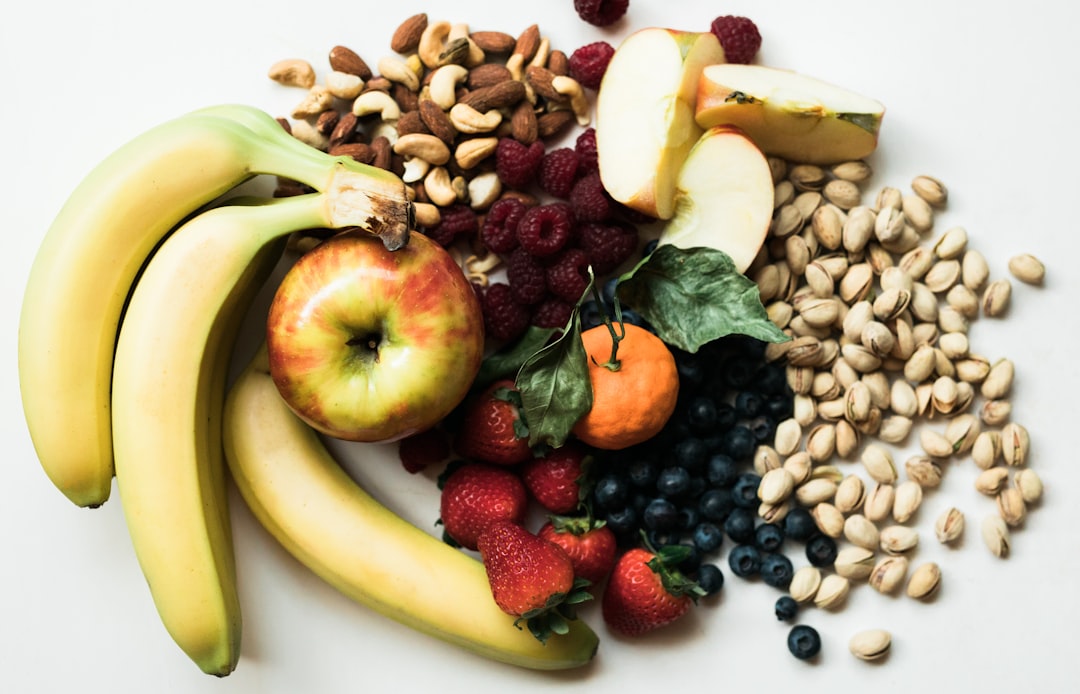The Winter Weight Trap: 5 Reasons Your Metabolism Slows Down When It Gets Darker
As the days grow shorter and darkness falls earlier, it’s not your imagination—something really does shift within our bodies during the winter months. Maybe you’ve noticed your jeans feeling a bit snugger, or a persistent urge to hibernate with comfort foods and quiet evenings. If you’ve ever wondered why maintaining a steady weight or energy level feels more challenging as daylight fades, you’re far from alone. Understanding what happens to our metabolism during the colder, darker months isn’t about blame or willpower—it’s about biology, compassion, and building habits that support us through every season. The “winter weight trap” isn’t a personal shortcoming. Your body is designed to adapt, conserve, and protect itself, especially when faced with fewer daylight hours, chillier air, and subtle emotional shifts. Science shows that hormones, movement patterns, food choices, and even the light streaming through your window all play a role in shaping your metabolism over the winter. The good news? Awareness of these factors can help you work with your body, not against it. In this gentle guide, we’ll walk through five research-backed reasons your metabolism naturally slows down when it gets darker—and, most importantly, share realistic, supportive steps you can take to care for your body and well-being all winter long.
1. Cortisol and Stress Response Changes

Winter’s dwindling daylight hours quietly disrupt the body’s stress response, leading to elevated levels of cortisol—the so-called “stress hormone.” Cortisol naturally ebbs and flows throughout the day, helping us wake up, respond to challenges, and wind down for sleep. Yet, as darkness falls earlier and morning light becomes scarce, these balances can shift, causing an uptick in baseline cortisol and making metabolism sluggish. High cortisol doesn’t just alter your mood; it slows your body’s ability to burn sugars and fats efficiently, nudging the system toward increased fat storage, especially around the waist. Scientific studies confirm that persistent cortisol elevation makes losing weight more difficult and contributes to what experts call the “winter slow-down.” One striking statistic notes that up to 95% of diets fail, and hormonal factors—like persistently high cortisol—are a big part of why. As sports nutritionist Rachael Attard puts it, “Trying to lose weight with a cortisol imbalance is tough... Sometimes, your body just needs you to slow down.” Skipping breakfast or starting the day stressed can make this worse, since cortisol naturally peaks in the morning and needs the calming rhythm of nourishing food and gentle movement. Small, nurturing steps can help tame winter’s cortisol curve. Try welcoming the day with even ten minutes of natural or bright artificial light. A steady, balanced breakfast (with protein and healthy fats) helps anchor blood sugar and encourages cortisol to recede. Routines like mindful breathing, short creative breaks, or a cozy morning walk can help your nervous system reset for calmer metabolism. Most of all, remember: slowing down isn’t failing—it may be exactly what your biology calls for during darker months.
2. Reduced Physical Activity Patterns

As temperatures drop and daylight becomes a rare guest, it’s easy to find yourself curled up indoors, moving less than you might during sunnier seasons. This isn’t just about motivation or mindset—winter’s shorter days and colder weather truly shape our daily routines. National surveys and wellness experts alike observe a clear drop in outdoor movement as winter settles in. Even people who enjoy regular walks or exercise often find themselves skipping sessions due to icy sidewalks, wet weather, or simply the appeal of a warm blanket and another episode of their favorite show. This seasonal slow-down can mean our bodies burn fewer calories each day, gently nudging metabolism to a quieter pace. Importantly, it’s not a character flaw or lack of willpower. Even the most dedicated movers face real, physical barriers when the world outside turns harsh. Pausing to honor those barriers—and release any guilt—can actually free you to find creative ways to move indoors or reimagine what “activity” means over the winter. Small sparks of movement add up, even without a gym or sunshine. Try stacking gentle stretches while waiting for your coffee, cueing an upbeat playlist for a kitchen dance break, or finding online classes that offer movement at home. If you’re able, short winter walks (even 5–10 minutes) bring the benefit of fresh air and a little natural light. For some, movement might mean gentle yoga, stretching, or even carrying groceries up the stairs. Every bit supports metabolism and keeps your body in a rhythm that feels attainable, not forced, no matter the season.
3. Metabolic Adaptation to Food Restriction

It’s common to approach winter with resolve—maybe cutting calories or skipping snacks in hopes of “catching up” after holiday treats or preparing for spring. But your body, ever wise, sometimes interprets these well-intentioned restrictions as signs of tough times ahead. The biological result? Metabolic adaptation. When faced with fewer calories or drastic changes in eating routines (especially after a season of indulgence), your system slows its calorie-burning engine, conserving energy and quietly raising hunger hormones. This adaptation evolved to protect us from ancient winters and food shortages, but today it can feel frustrating when you do everything “right” and progress stalls. Medical experts like Dr. Lubna Elahi caution against harsh diets or drastic food cuts, especially in the darker months, urging people to work with their body’s natural rhythms instead of fighting against them. Skipping meals, grazing endlessly, or ping-ponging between feast and famine cycles can also drive the body further into this protective metabolic mode. Nourishing your body through winter is an act of kindness, not “giving in.” Choose satisfying, balanced meals with protein, healthy fats, and fiber to signal safety and stability to your metabolism. Mindful eating—doing your best to tune into hunger and fullness cues—can help, as can building in small moments of food enjoyment, even on busier days. For some, seeking guidance from a knowledgeable health provider can help reframe nutrition as part of winter self-care, rather than a strict set of rules. With patience and compassion, your metabolism can stay steady throughout the season.
4. Light Exposure and Circadian Rhythm Disruption

Have you ever noticed your energy flagging earlier in the evening or your cravings shifting once the clocks “fall back”? That’s your circadian rhythm at work—a natural cycle for sleep, hormones, and metabolism tuned tightly to the rising and setting of the sun. In winter, less sunlight and longer stretches of darkness cue the body to “wind down” metabolism sooner. This shift can change not just how much energy you burn, but also when you feel hungry, sleepy, or ready to repair and recover. Experts now believe meal timing matters even more during winter, as eating after dark or during late nights can upset blood sugar, impact sleep quality, and disrupt metabolic repair. Science recommends prioritizing the bulk of your meals during daylight hours and aiming for consistent, gentle sleep patterns that reflect the natural signals around you. For many, a dose of bright morning light—either from a sunny window or a light therapy device—can help strengthen the body’s metabolic rhythm. Consider syncing your biggest meal to daylight hours and experimenting with a gentle tech “sunset” (dimming lights/screens) as the evening begins. Try to get outdoors when the sun is up, even for a few minutes. These small steps work with the body’s circadian system—nudging metabolism into a pattern that honors both science and the realities of modern winter life.
5. Nutritional Deficiency Patterns

Long, dark months can quietly deplete the body’s store of key nutrients—especially when stress is high and comfort foods tempt us more often. Elevated cortisol (that persistent winter stress hormone) burns through critical minerals and vitamins at a faster rate. Meanwhile, winter diets often rely on starchy, less nutrient-dense foods that fill us up but don’t always provide deep nourishment for cellular repair and metabolic smoothness. Nutritionists highlight the benefits of including “powerhouse” foods: eggs, sardines, beef liver, and other protein-rich options that deliver minerals, B-vitamins, and healthy fats in winter-friendly packages. While plant foods are still valuable, their nutrient density and absorption can be lower—especially in the darker season, when metabolic needs are higher. Supplements, such as vitamin D or desiccated organ options, may help fill any gaps, but always consider checking with your healthcare provider before adding new products. To support metabolism, try including a variety of colorful vegetables, nuts, seeds, and strategic protein options in each meal. Consider prepping winter stews, hearty soups, or simple egg dishes to make nourishment accessible and comforting. The goal isn’t perfection—just gentle tweaks to stack the nutritional deck in your favor, ensuring your body is replenished and able to thrive, not just survive, through winter.
A Season for Gentle Adaptation

Winter invites us to slow down, listen closely to our needs, and embrace a gentler rhythm where self-care becomes both essential and nurturing. If you’ve experienced a shift in your energy, mood, or body during the darker months, rest assured—you are moving in harmony with powerful, ancient biological patterns, not failing at modern expectations. Honor each small adjustment you make, whether it’s stepping into the light for a few extra minutes, building comforting meals, choosing movement that fits your life, or letting go of harsh dietary rules. These shifts may be subtle, but together they build a foundation for lasting well-being, physical comfort, and inner resilience. The winter weight trap isn’t something to fear—it’s a call to compassionate attention and gentle adaptation, both inside and out. As the days grow longer again, your metabolism will gradually rebound—proof of your body’s remarkable capacity for change. Until then, every nourishing choice is an act of both survival and celebration, helping you feel vibrant through every season.